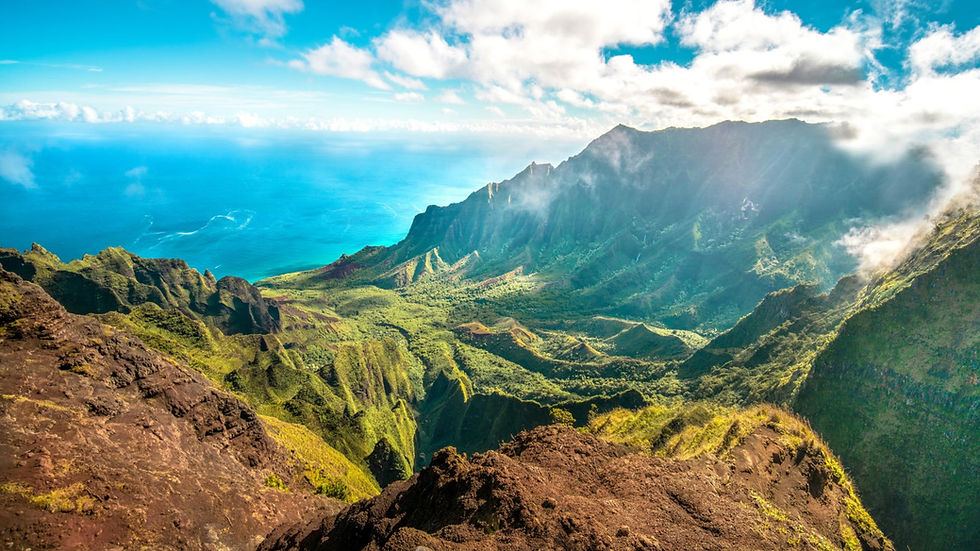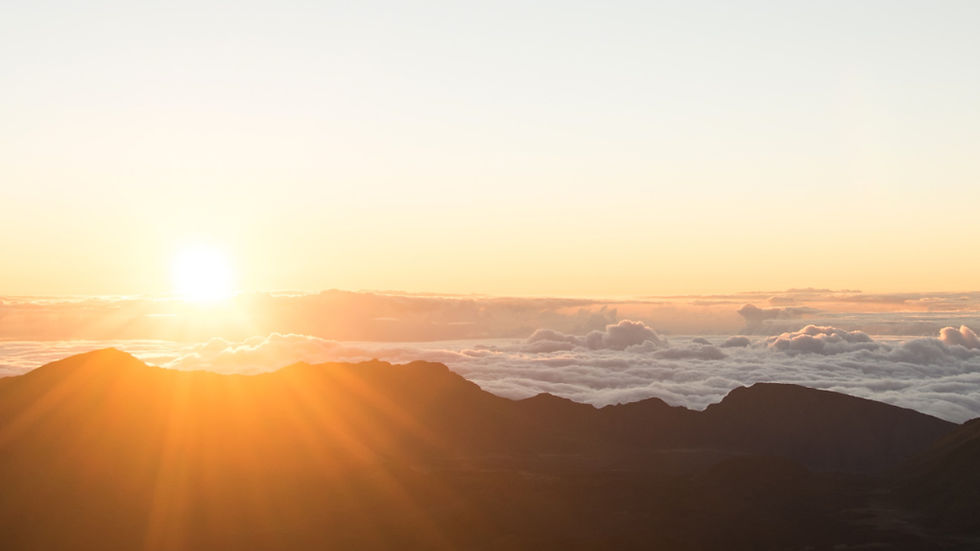Lava on Kilauea, is Hawaii's most Active Volcano Erupting?
- Shy Bredewold

- Jun 20, 2023
- 4 min read
Updated: Jan 17
Seeing flowing lava or the fountain of an erupting volcano has got to be near the top of most people’s bucket lists!
Hawaii was built by volcanoes, after all. Their cultural significance for the local people can’t be described in a mere blog article – nor can the profound effect of witnessing such power.
In addition to planning a once in a lifetime experience, visiting Hawaii Volcanoes National Park, Kilauea’s activity can affect other practical aspects of your trip to the Hawaiian Islands when there's an eruption ongoing. Think air quality, flight disruptions, and just plain staying safe.
To better help you gauge Kilauea’s activity during the last few years, here’s a chronology of some of the most significant, recent eruptive periods:
Is Kilauea Erupting Right Now?
At present, Kilauea is experiencing a period of eruptive activity continuing from late 2024.
2024
A pair of short-lived eruptions through mid-2024 occurred during the morning of June 3rd and for a few days in September, between the 15th and 20th.
A longer active period however started during December 23rd and continued through January of 2025.
2023
Erupting with an observable fountain over 160ft, Kilauea sprung to life on January 5th, giving rapid rise to the crater’s lava floor and consuming the fountain’s source. This short eruptive period lasting roughly two months came to an end on March 7th.
Only a few months later, during the early hours of June 7th, the crater again saw a large outpouring of lava; local residents and visitors were at the time cautioned of further activity and the possibility of vog. Despite the quirky name, it's not to be messed with: a phenomena where sulfur dioxide and gases released by the volcanic activity mix with the local atmosphere to form a heavy, fog-like event.
This period of flow quickly arose and subsided, maintaining a smaller, almost imperceptible flow throughout the period ending September 13th.
2021 – 2022
Kilauea commenced a somewhat lengthier period of activity on September 29th, 2021, where fountains exceeding 200ft were initially observed before giving way to a more gradual rise in the Halema’uma’u crater floor.
The lava floor was seen to have crusted over by December 9th, 2022. Shortly thereafter, the eruption was determined to have concluded – adding only 500ft to the crater’s floor despite more than 12 months of activity.

2020 – 2021
2020 finished with an exciting eruptive event just before Christmas, where on December 20th a huge plume exceeding 30,000ft was observed!
Following this initial burst of activity, the water lake which had formed within the Halema’uma’u crater was boiled off and the floor of lava would gradually fill and lift the bottom nearly 700ft through February of 2021.
During early May of 2021, the flow would end and on May 20th, the new lava lake had crusted over completely. By the end of May a new period of inactivity was declared.
2019 – 2020
For the first time in more than 200 years, a water lake formed within Kilauea’s summit crater, Halema’uma’u. It was suspected that earlier collapses in 2018 brought the crater’s floor below the water table, the water’s depth was recorded over 160ft in early December, 2020, immediately prior to the next period of eruptive activity.

2018
Spring of 2018 saw clusters of small earthquakes, general if sporadic increases in seismic activity, and changes in pressure across a number of Kilauea’s sites, primarily to the east.
Magma flows underground led to the collapse of the crater flow at Puʻu ʻŌʻō on April 30th, 2018 while May of 2018 saw a number of earthquakes reaching 5.0-6.9 on the Richter Scale.
Twinned with lava flows, more than 650 homes were destroyed through June 25th of 2018.
Several such flows reached the ocean, bringing their own hazards including the release of noxious gasses as the lava’s incredible temperature and contents burn up with the cooler sea water.

1983 – 2018
Perhaps you have a story to share from your own visit to Kilauea or to Hawaii during this time?
Because Kilauea featured exhibited one of the longest observed eruptions across the whole of planet earth, and perhaps the most famous, Kilauea’s eruptive activity was often seen as the most reliable place for tourists to see flowing lava!
So longstanding had this period of activity lasted, it took roughly three months of inactivity for officials to declare its conclusion.
Before 1983
Obviously Kilauea has been an active volcano for a considerable length of time, Hawaii itself has grown up from the ocean floor through such activities.
Written records and local oral history outline a trend toward activity, with periods of ten years or more being unsurprisingly active or inactive. In fact it’s believed that 1780-1924 was pretty much one continual process of eruptive activity!
Geologists can help shed more light on the subject, suggesting countless eruptions at the summit and along the volcano’s ridges over the past 450,000 years. That means a near-continual change in depth of its crater floors, too!
Your Visit
There are few places where you can see flowing lava, fewer still with the kind of tourist infrastructure that permits a relaxing vacation to go along with an exciting excursion!
Just remember that Kilauea makes up her own mind when to erupt and for how long! Anyone planning Hawaii in 2016 couldn’t have imagined a time when the volcano wasn’t erupting, but that isn’t any longer the case and there’s no guarantee that the latest activity will or won’t last beyond your cruise.
Not to mention it’s a volcano erupting! There are health considerations and safety should take priority over snapping a great picture. The other effects of eruption can also disrupt your plans, a volcanic plume doesn’t exactly make for great flying conditions, after all.
Whether your visit to Kilauea is graced with lava or not, remember that the volcano holds incredible cultural significance and your visit will be memorable regardless the conditions.
What’s more, you’ll be standing on a piece of history etched into the geological record – that’s waaay longer than people have been around.
Have you seen lava flowing in Hawaii or elsewhere? Have questions about your upcoming trip to the Hawaiian Islands? Let us know in the comments below!




Comments